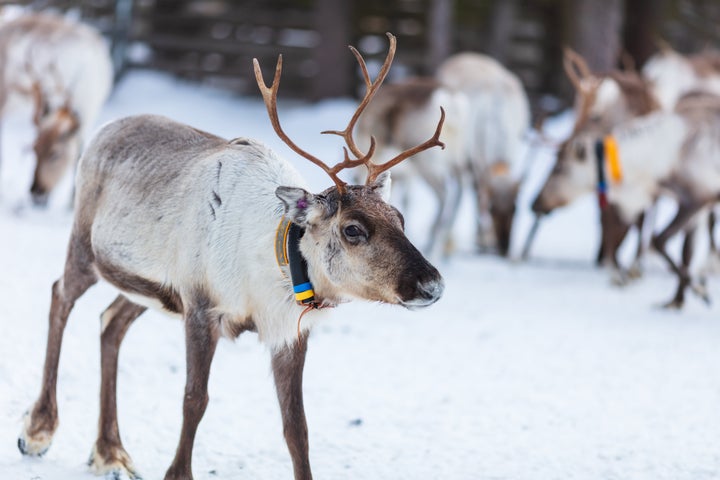
Who doesn’t love a little pick-me up at this time of year?
Whether it’s because you want to absorb every ounce of good news over the holiday break, or you’re feeling overwhelmed by the festivities, we all deserve to know more about those positive stories which can, admittedly, be overshadowed by the more downbeat news.
So here’s a quick look at five uplifting news stories which may have passed you by this month.
1. We now know why reindeers don’t need a red nose
Yes, forget what you know about Rudolph.
A new study found that reindeers’ eyes change colour when the weather gets colder, to allow more UV light in – they are the only known mammals to do this.
Changing their eyes from golden-orange in summer to blue in winter means they can then see more of the very pale lichen they eat, their primary source of food.
These patches of vegetation would stand out as dark patches even among the snow for reindeer, and means they can see in the dark.
No update on whether they fly a giant sleigh across the night’s sky, though.
2. Notre Dame Cathedral is reborn
Four years after a fire tore down the monument, the cathedral is still being restored and is not expected to open until December 2024.
But, it just got its weathervane back – and rather than the traditional rooster, the landmark had a phoenix installed on its spire, which stands 96m from the ground.
The particularly apt golden bird is meant to honour the rebirth and resilience of the landmark structure.
The phoenix was blessed and filled with sacred relics and the names of those who aided the reconstruction.
3. Terrifying fossil emerges from the deep
A 6ft 5in skull belonging to a pilosaur was just discovered off the UK’s Jurassic Coast.
The enormous marine reptile lived around 150 million years ago, but remarkably, its skull was one of the most complete specimens of its type to ever be unearthed.
Experts were astonished to see every bone was still present, noting that there are almost no fossils like it.
It was discovered when a local palaeontologist noticed its snout poking up on the Dorset beach.
It took months for the whole skull to be extracted and cleaned – and locals are hoping the rest of the dinosaur is waiting in the cliff to be uncovered.
The skull will be part of a David Attenborough programme – Attenborough and the Giant Sea Monster – broadcast on BBC One on New Year’s Day.
4. World’s oldest living land animal reached another milestone
Yes, Jonathan the Tortoise celebrated his 191st birthday recently – that means he existed before the telephone, the postal stamp or the photograph was even invented.
The Seychelles giant tortoise in thought to have been born in 1832, making him the world’s oldest living land animal.
And, he’s an LGBTQ+ icon, having spent 26 years partnered with a fellow male tortoise.
It’s no wonder he is featured on the reverse of the local 5p coin.
However, the exact date of his birth isn’t known – his age is just an estimate, because he was fully mature (at least 50) when he arrived on St Helena in 1882.
5. Did we find a solution for nuclear waste?
Liquid and solid waste is now being transformed into non-radioactive glass over in the US, in Washington State, which can then be disposed of.
It’s part of the Hanford nuclear cleanup site and has been commissioned by the Department of Energy.
While worries about the health and environmental risks that come with using nuclear power remain, this procedure is a big deal – it could help tackle the dangerous waste plutonium left over from Cold War nuclear weapons which has been prone to leaking.
Mixing the nuclear waste with traditional glass-forming materials at high temperatures makes solid glass which can be kept underground.
This idea has been floating around for some time (at least two decades) but now the first container of glass has been produced.
